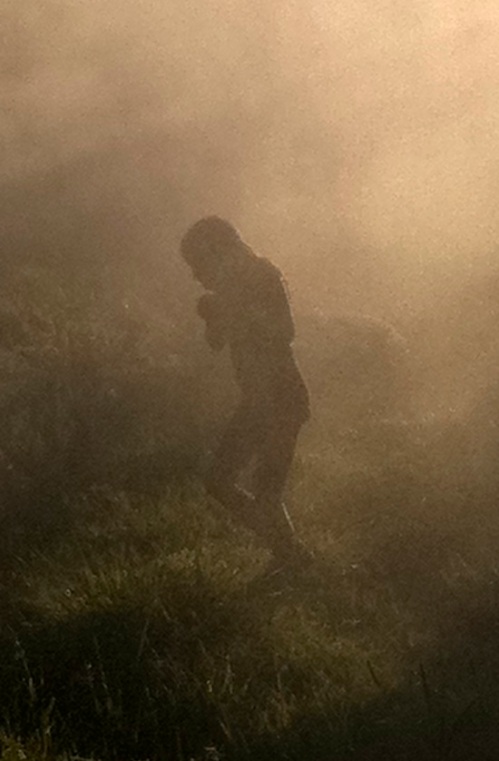Synesthesia
I cannot stop thinking about some of the things people have written regarding pain or doing things that others perceive as painful, but that they perceive as relief or calm or being more present. One person described it as feeling “organized.” And then there are the people who described various types of synesthesia coupled with pain. So I wanted to circle back to synesthesia specifically as this is something I know little about and I’m assuming many others may be unfamiliar with it as well.
*For those of you who are synesthetes, please jump in and comment or email me (emmashopeblog@gmail.com) privately. Anything you tell me will be treated as confidential unless you give me permission to quote you, I will paraphrase and not use your name.
There are a number of interesting websites (these are just a few I found particularly interesting, but there are dozens more): Neuroscience for Kids – Synesthesia, American Synesthesia Association, Brain Pickings, ScienceBlogs and Synesthete.org explains: ”Synesthesia is a perceptual condition of mixed sensations: a stimulus in one sensory modality (e.g., hearing) involuntarily elicits a sensation/experience in another modality (e.g. vision). Likewise, perception of a form (e.g., a letter) may induce an unusual perception in the same modality (e.g. a color).” Synesthesia is thought to be inherited affecting 2-4% of the population, though there is no evidence to suggest a higher prevalence of synesthesia in Autistics and it seems women are more likely to experience it than men. *It must be noted, everything I’ve written in this paragraph was gathered on the internet and almost all of the various articles are written by non-Autistic people. I have added links to the original sources throughout.
Someone described how they can smell colors and another wrote about being able to smell people’s emotions. They described being able to smell someone they saw from a distance or on television. Another person wrote that when they meet someone they see color. Someone else wrote about how a particular self-induced pain causes them to see the most beautiful flashes of colors, exquisite and unique and unlike anything they’ve ever experienced. And still others talk about how numbers or letters have personalities, this is called, ordinal-linguistic personification. One person described it as a numeric “soap opera” and said, “2 and 4 are in love, but 3 hangs around and is like an annoying little brother, always wanting to be included, but nobody wants him around.”
I found a great post by Jessica Bagnall entitled, Synesthesia-Why My Numbers Have Personalities, she writes, “Five is a businessman that has a half-relationship with Eight, though he is unable to commit. He is flaky and often impossible to get hold of, though he tries to be more stable. He is the older brother of Seven.“
And then I read this Autism and Synethesia (the mis-spelling is on the site): ”On a whim, I asked my son Tom, age 11, if he sees colors when he plays notes on the piano. Tom, who is diagnosed with high functioning autism, plays both piano and clarinet. Oh, yes, he said, he does! Here are the note/color correlations he gave me, right off the top of his head:
- C=red
- D=orange
- E=yellow
- F=green
- G=blue
- A=”pink”
- B=violet
I drew a series of dots in the colors he gave me, and asked him to play them on the piano. He played Frere Jacques flawlessly.
I looked up synesthesia, and found that there’s a close link between synesthesia relative to music – and perfect pitch (which Tommy has).”
I have to wonder whether my daughter experiences some version of synesthesia and if most who are profoundly moved by music do as well. Which then lead me to think about art, poetry, writing, painting, sculpture and dance. Are all of us born with some degree of synesthesia, which we then lose as we mature? Just as all of us are capable of learning many languages as young children, but as we grow older acquisition of other languages becomes increasingly difficult, is this true with synesthesia as well? As with so much surrounding neurology, I find the more I learn, the more questions I have!
To all of you who have shared your stories – thank you. Many of you have shared incredibly personal things and I’d like to acknowledge that and tell you how grateful I am. So thank you, really, thank you for being willing to describe such personal things. I am profoundly grateful to all who’ve reached out to me. I hope I’m doing your experiences justice in these posts.
Em at dusk running through the sprinklers on the ranch – Summer 2011
Monday, February 18, 2013
Synesthesia | Emma's Hope Book
Subscribe to:
Post Comments (Atom)

No comments:
Post a Comment